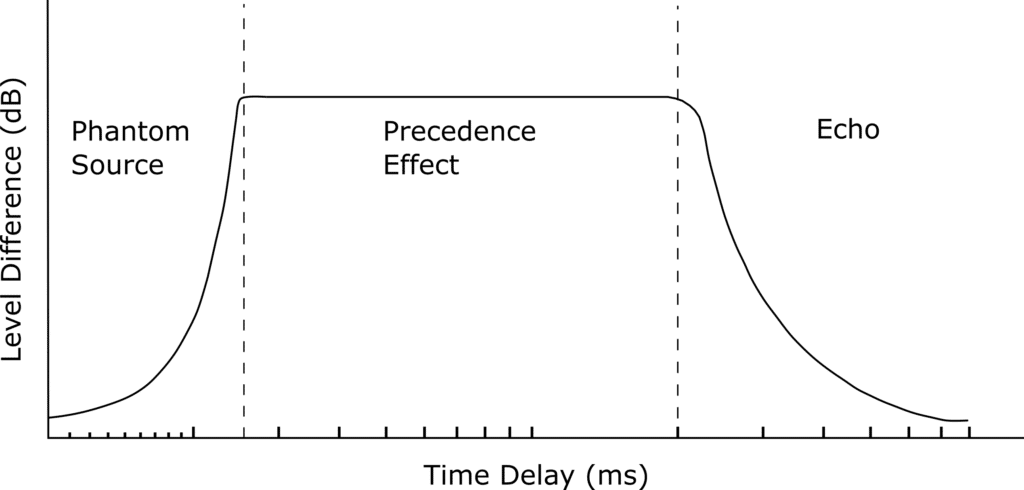In enclosed acoustic environments, such as concert halls and auditoria, the soundfield is rather complex due to the walls, floors, architectural articulations, and other elements. This type of soundfield is divided into three stages: direct sound, early reflections, and late reflections (reverberation). Here, we will discuss how the auditory system resolves localization using direct and reflected sound.
Although the listener is bombarded with many acoustic reflections, the first wavefront that reaches the listener is processed as the location of the source. This phenomenon is called the precedence effect. As with many directional hearing effects, the time difference between the wavefronts plays a crucial role in the localization. If the signals are perceived within approximately 1 – 100 milliseconds, the law of first wavefront takes effect, and the source is perceived as expected. Below this region, the listener will sum the signals and perceive a phantom source relative to the gains of each signal. Above, the listener will hear multiple auditory events; this can is perceived as envelopment or even an undesired echo. It should also be mentioned that this effect is strongly dependent on the type of sound source.
An application example lies within electroacoustic systems design. Loudspeaker systems are often used to reinforce speech within the auditoria or multipurpose venues. Even with the loudspeaker being 3-10dB louder than the source, the listener still perceives the location of the source from the direct sound.
